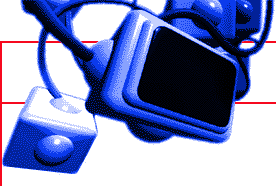Space Station - 2020
Fact-Pak
The space station will be in orbit above the Earth, and also above the protective blanket of our atmosphere. The atmosphere serves many functions as well as providing us with something to breathe: it also protects us from the hostile conditions of space. The space station will face problems of solar heating, radiation and, in particular, micrometeoroid impacts.
All the individual grains of rock and dust in space are called "meteoroids" while they are in space; it is only when they interact with the Earth and its atmosphere that they receive different names: meteorites are massive enough to reach the ground; meteors are very small, often smaller than sand grains, and burn up in the atmosphere, producing "shooting stars". Above the atmosphere, the space station will be exposed to impacts from these, and other very small particles called "micrometeoroids". These may be natural, or man-made, consisting of particles of paint or other debris from satellites, launchers etc. Even microscopic particles may cause considerable damage, because they are moving at very high speed, thus they have great kinetic energy, as per the formula for kinetic energy: KE = 1/2 mv2.
This module presents the students with practical activities and investigations into cratering. Some maths is included, but many of the key concepts can be inculcated via empirical observation. The concepts are relevant to the space station and planetary surfaces such as the Moon. The students may wish to consider the cratering records of the Moon and Mars, and discuss how these are used to give dates to their surfaces. Further research into why the cratering record on the Earth is so difficult to read, due to plate tectonics and weathering, can also be done.
Go to Action-Pak 1
Go to Action-Pak 2
Warp to the Teachers' Index Page
|





